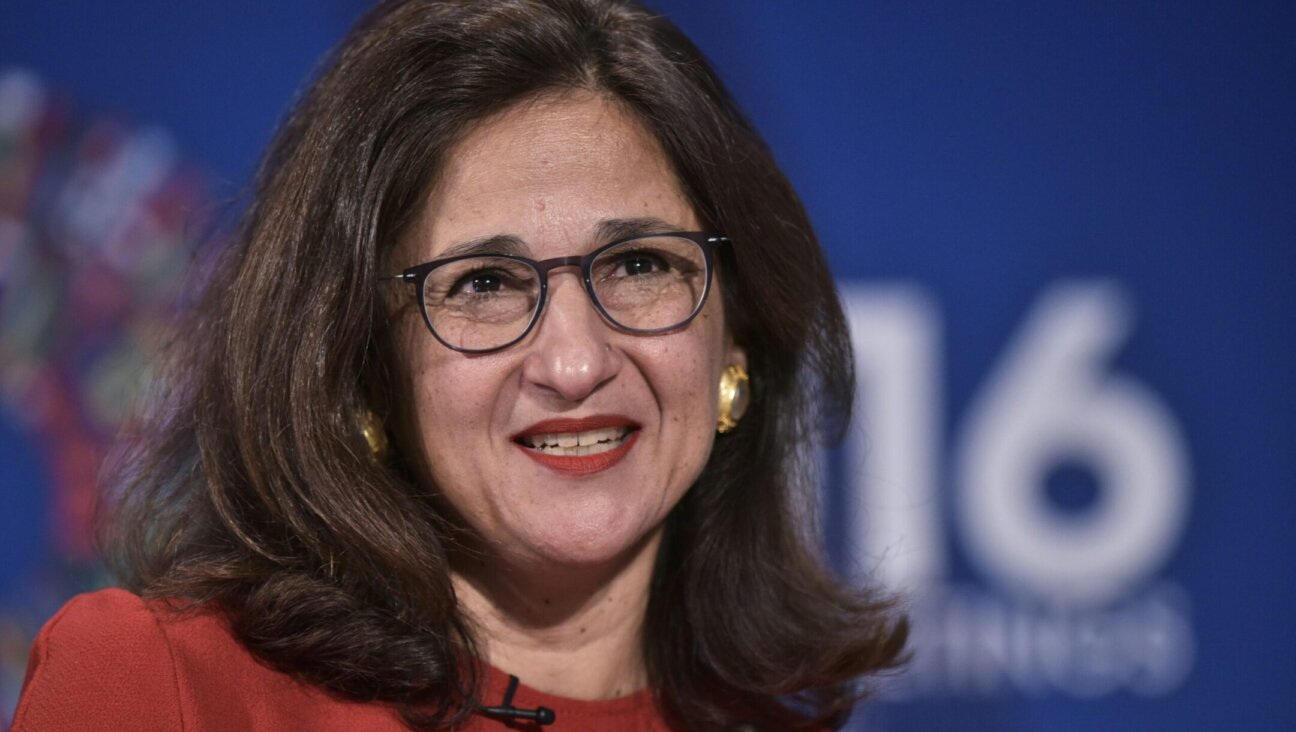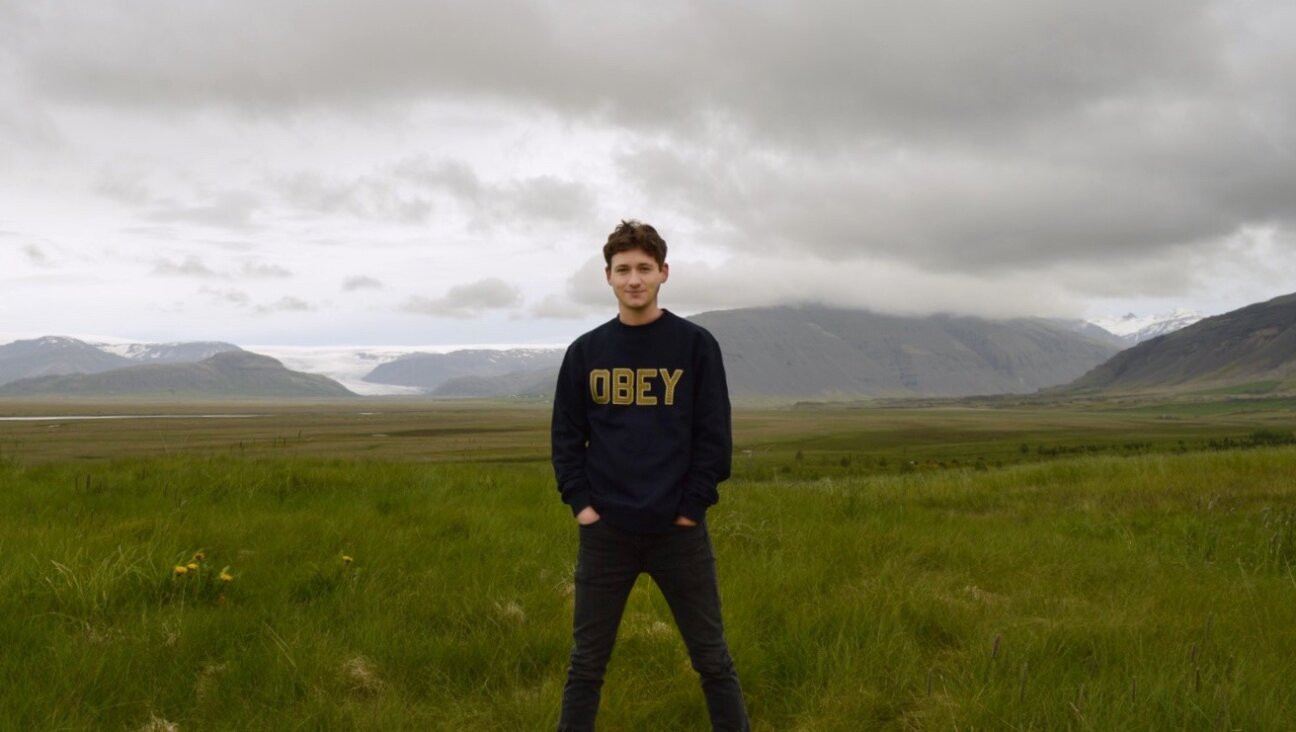Mamaloshn: The San Francisco Treat
Six thousand miles from Ashkenazic Jewry’s ancestral home, and a continent’s width from the home it adopted a century ago, Yiddish culture has taken root in Northern California, and — perhaps nourished by Sonoma wines, organic produce and sourdough bread — it is thriving.
Headquartered in Berkeley and fueled by an unusual mix of intellectual, spiritual and political forces, a Yiddish revival has left the Bay Area awash with klezmer concerts, language classes, reading groups, music lessons and Web sites — all dedicated to the furtherance of Yiddish language and culture.
“People tend to think of Yiddish as being concentrated on the East Coast, but it’s really taking off here.” said Yael Chaver, a lecturer in Yiddish at the University of California, Berkeley, who recently began hosting a monthly Yiddish reading group in her home.
Berkeley thrust itself into the forefront of Yiddish study two years ago with the inauguration of a three-day conference at U.C. that assembled Yiddish scholars from around the world. The school will be hosting its third Yiddish conference, now an annual event, in May. “With its faculty, graduate students and vast library holdings, U.C. Berkeley holds a pre-eminent place in the world of Yiddish studies,” said John Efron, professor of German-Jewish history at the university. A native of Melbourne, Australia, and raised in a Yiddish-speaking home, Efron, who arrived on campus in 2002, was instrumental in establishing the Berkeley Yiddish conference.
But it’s not just on the U.C. campus that Yiddish is being cultivated in Berkeley. Lehrhaus Judaica, a Jewish studies school for adults, has for the last eight years sponsored a class in Yiddish texts with a following so devoted, it continues to meet even during the school’s summer break. Then there’s the Berkeley JCC, which offers Yiddish classes of its own.
And Berkeley is far from being the region’s only home for Yiddish study. Last year, Stanford University, the Bay Area’s other academic powerhouse, earmarked enough money for three years of Yiddish-language instruction. Though the program is still in its infancy — the fall class, which was taught by Berkeley graduate student Jeremy Finkin, had only five students enrolled — it nevertheless caused something of a stir. “Yiddish Makes a Comeback,” announced the headline of a story about the program in the San Jose Mercury News. Stanley Siegelman, a contributor to the Forward, was moved to celebrate the event in verse in a recent Der Vinkl column in these pages: “Oy, mamaloshn is ‘What’s new’/In California’s Stanford U.,” the poem began.
While the coverage of the new Stanford program might have been a bit overheated, it nevertheless pointed to a larger reality. “Nationally and internationally there’s been a rise in interest in Yiddish, which hasn’t happened evenly but with pools in certain places — and one of those places is here,” said Gabriella Safran, a professor of Slavic literature at Stanford who is writing a biography of the Russian and Yiddish writer S. Ansky. In 1999, Stanford hired librarian Zachary Baker,
who for the previous 12 years had been the YIVO Institute for Jewish Research’s senior librarian. Baker’s hiring was a clear response to the changing needs of the university’s students and faculty. “Stanford’s Jewish studies program has a strong emphasis on the modern period, especially in Eastern Europe, and so resources in Yiddish are very important to them,” Baker said. Around the time Baker was hired, Steven Zipperstein, director of Stanford’s Jewish studies program, called him “the consummate librarian of old Jewish culture,” in an interview with J., the Jewish news weekly of Northern California.
Midway between Stanford and Berkeley is San Mateo, home of Philip Kutner, the Bay Area’s unofficial godfather of all things Yiddish. A transplanted Easterner who goes by the nickname “Fishl,” Kutner grew up speaking Yiddish, but with time he moved away from it. In 1991, the 75th anniversary of author Sholom Aleichem’s death, Kutner became involved with commemorations sponsored by local JCCs. The experience prompted him to start a newsletter titled “What’s Going on in Yiddish in the San Francisco Bay Area.” The project grew from a simple one-page flier to a 16-page monthly. Kutner also maintains a Web site, www.derbay.org, an amazing information clearinghouse offering lists of Yiddish events, teachers and translators both in the Bay Area and around the world.
Why this explosion in the Bay Area? And why now?
The answers are numerous, but among those heard most often is that the opportunity to interact with those who were raised in Eastern Europe is vanishing. “There’s the realization that native speakers are growing rarer,” said Berkeley’s Chaver, “and people in the community who have Yiddish in their background are anxious to hear the language and learn with native speakers. There’s something of a sense of urgency.”
Another engine for the region’s interest in Yiddish springs from a source that has been around in the area for a while: klezmer music. In April 1976, the Berkeley Public Library, a center for the performance of world music, sponsored two concerts by a newly renamed local band called The Klezmorim. Music historians have come to regard those two shows as the beginning of the modern-day klezmer revival.
In the years that followed, klezmer’s center of gravity shifted to the East Coast, where annual “KlezKamps,” weeklong celebrations of Yiddish music and culture devised by klezmer pioneer Henry Sapoznik, became the chief incubators of the klezmer revival. But now, klezmer has returned to the Bay Area in new form. Based on the KlezKamp model, San Francisco has for the last two years played host to KlezCalifornia, which will convene again in September.
“The KlezKamp approach is a total immersion in the world of the Jews of Eastern Europe,” said Ellie Shapiro, a founding member of the KlezCalifornia board and the director of the Berkeley-based Jewish Music Festival, which this year stretches from March 19 to April 3. “You might go to camp interested in music and find that an interest in Yiddish literature has been kindled.”
Some describe the Bay Area’s burgeoning interest in Yiddish as a sort of spiritual quest. “It’s like Hollywood people looking to Kabbalah,” Kutner said. But, contrarily, many in the region say that Yiddish offers an approach to Judaism that is divorced from any sort of spirituality. Indeed, some argued, this is one of the main ways in which the study of Yiddish differs between California and New York. “The communities interested in speaking Yiddish in New York seem to have more of a religious bent — and not just the Hasidic enclaves,” Berkeley doctoral candidate Allison Schachter said.
Others offered a political rationale for the popularity of Yiddish in the region. Many pointed out how left-leaning Bay Area politics can create a climate hostile to anything that smacks of Zionism, including the Hebrew language. In this view, Yiddish is seen as the “counter-Hebrew,” a softer way to engage with Judaism. But some have sought to defuse this critique. Robert Adler-Peckerar, a recent Berkeley graduate who is now director of education at the National Yiddish Book Center in Amherst, Mass., argued that no serious student of Jewish literature will slight one language at the expense of another. “At Berkeley these things are always taken together,” he said. “Essentially, they’re inseparable.”
And then there were those intrigued by the idea that the flowering of Yiddish in Northern California could be considered news. “Historically, there has existed this notion that Yiddish is organic to certain places and that it seems odd or funny or weird or amazing when it suddenly arrives elsewhere,” Schachter said. “Even today we feel that there are certain spaces that Yiddish should be in — the Lower East Side or Vilna or Jerusalem, but not in California. Of course, all contemporary engagement with Yiddish takes place away from where it began, and yet, in spite of it all, it’s all connected.”

I hope you appreciated this article. Before you go, I’d like to ask you to please support the Forward’s award-winning journalism this Passover.
In this age of misinformation, our work is needed like never before. We report on the news that matters most to American Jews, driven by truth, not ideology.
At a time when newsrooms are closing or cutting back, the Forward has removed its paywall. That means for the first time in our 126-year history, Forward journalism is free to everyone, everywhere. With an ongoing war, rising antisemitism, and a flood of disinformation that may affect the upcoming election, we believe that free and open access to Jewish journalism is imperative.
Readers like you make it all possible. Right now, we’re in the middle of our Passover Pledge Drive and we need 500 people to step up and make a gift to sustain our trustworthy, independent journalism.
Make a gift of any size and become a Forward member today. You’ll support our mission to tell the American Jewish story fully and fairly.
— Rachel Fishman Feddersen, Publisher and CEO
Join our mission to tell the Jewish story fully and fairly.
Our Goal: 500 gifts during our Passover Pledge Drive!






















